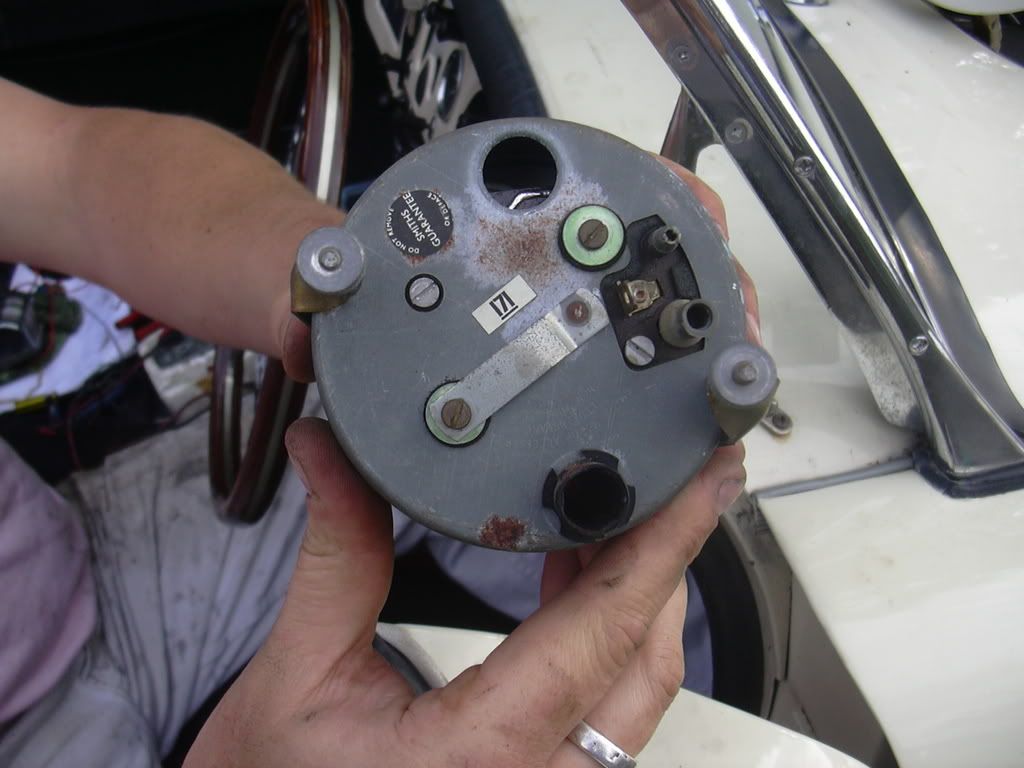The picture shows the back of an RVI type tach. These are current sensing. They receive power in the "normal" way but their connection to the coil circuit is in series.
Power: Earth connection to the case, switched (fused) 12V to the insulated spade lug on the plastic block.
To see if your tachometer is dead or has an internal short, hook the two power wires up as mentioned. Without the engine running, the tach circuit consumes almost no current. If the fuse blows without connecting anything other than power wires, you have a problem inside the tachometer. If the fuse doesn't blow, you're ready for the coil connection.
Since your car would not have tachometer wires as standard, the easiest way to connect the tach is to pull two (2) wires from the dash area all the way to the coil and distributor. Connect these two wires to the two bullet connectors on the back of the tach. At the engine, remove the wire going between the distributor and the low side of the coil. Take one of the new tach wires and connect it to the low side of the coil, connect the other wire to the distributor. Start the car and watch the tach. If it works as expected, you're done. If it seems to behave poorly, switch off the ignition and swap the connection points for the two wires on the coil and distributor.
Here's what's happening. Each time the points close, current flows through the coil (and your tach). When the points open, the current flow stops. Inside the tachometer is basically a transformer. The flowing and stopping current creates pulses that the tachometer uses to switch transistors on and off. The transformer "couples" the signal to the tachometer without a conductive connection between the tach and the ignition system.



 Hi Guest!
Hi Guest!

 smilie in place of the real @
smilie in place of the real @
 Pretty Please - add it to our Events forum(s) and add to the calendar! >>
Pretty Please - add it to our Events forum(s) and add to the calendar! >> 